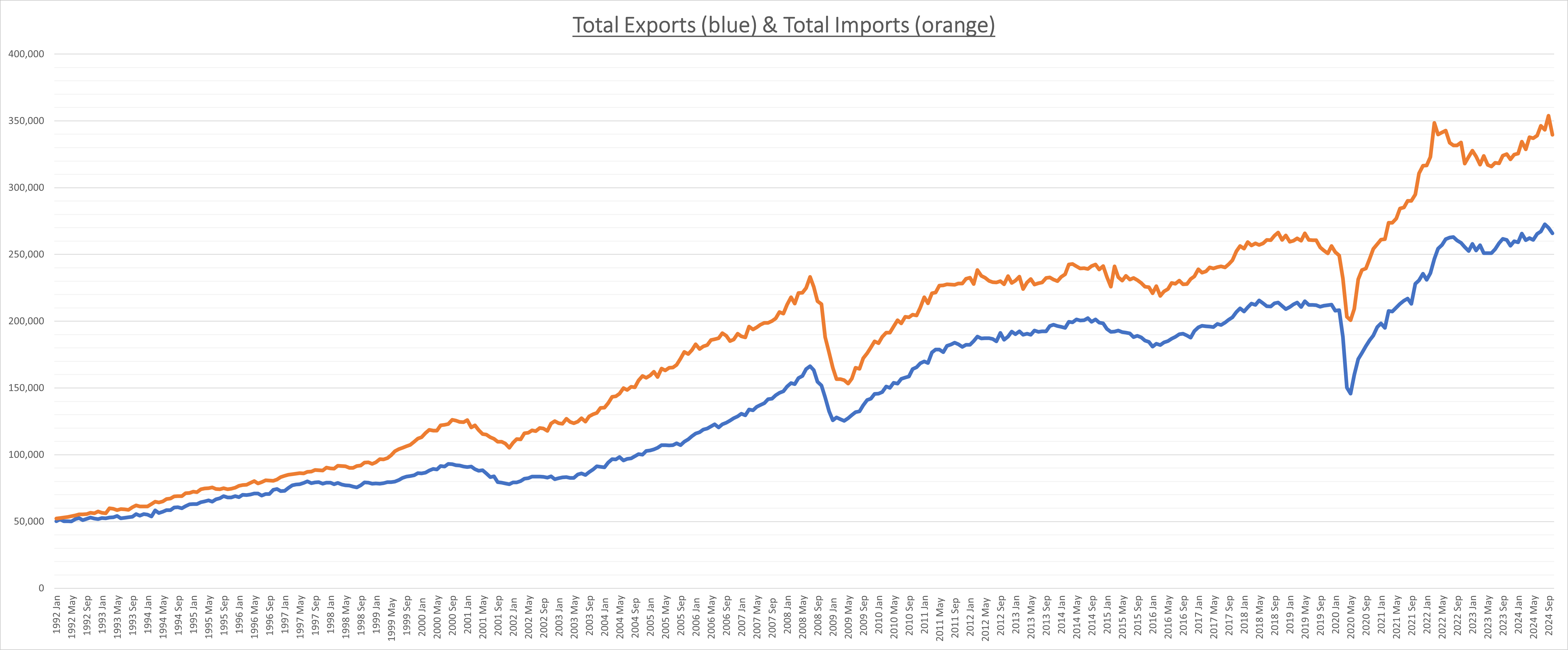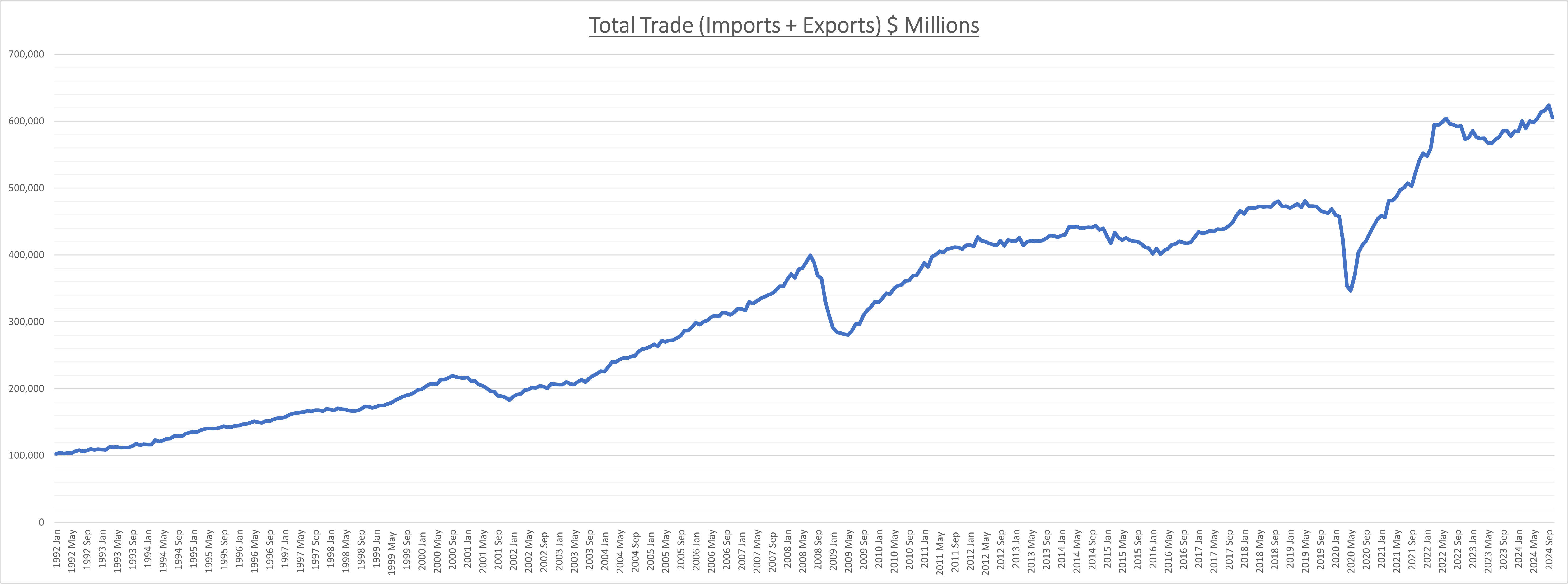The trade deficit for October came in at -$73.8 billion, which decreased from the revised -$83.8 billion deficit in September.

Imports and exports both decreased in October, with total exports falling $4.3 billion (-1.6%), while total imports falling $14.3 billion (-4.0%). Because exports declined less than imports, the total trade deficit improved a little.

I like to look at total trade (imports + exports) as a good barometer on economic activity. The only problem is the data operates on a lag, as we just got Octobers data even though we are in December. So its by no means a leading economic indicator.

Regardless, total trade came in at $605.3 billion, which is $18.5 billion (-3.0%) below Septembers data. This is the biggest one month drop in total trade in 2 years.

Total (EPA: TTEF ) trade is up +3.3% over the 12 months ending in October, which is a slowdown from the +6.5% total trade growth over the 12 months ending in September.
In terms of our biggest trading partners in regards to total trade (imports + exports), China continues to take a back seat to Mexico and Canada. It goes as follows:
- Mexico $238.9 billion
- Canada $227.8 billion
- China $170.9 billion
Although China remains the country we run the biggest trade deficit with by a wide margin (we imports a lot more than export).
There is a lot of talk about tariffs and trade these days. Unfortunately, not everything you hear/read is entire on the level. For example, no; China doesn’t pay when we slap tariffs on their imports. Actually, US companies that import stuff from China are the ones who have to pay. And they either except the added costs as a hit to their bottom line, pass on those costs to the consumers, or they move supply chains to new locations. Which is what is happening today, as China has fallen from our biggest trading partner, down to number 3, since these tariffs started (of course the COVID fallout has a lot to do with this too).
So China does “pay” indirectly, by losing foreign capital investments, but no money actually changes hands. What the administration tried to do back in 2016, was to implement pro-growth policies that offset these disruptions.
You will hear many headlines on what trade policy may look like in the future. It’s important to take everything with a grain of salt as most of it is negotiating tactics. We can’t even begin to calculate the potential effects on the economy until the actual policies are formed. It’s fruitless to attempt to predict the future.
Consensus is already forming that the trade policies will inevitably lead to higher inflation. Possibly. But let’s not forget that tariffs 1.0 (along with tax cuts and deregulation), didn’t lead to inflation. And actually you could make a case that period of time was more deflationary. Consensus is often wrong, and even if they get it right, consensus is often wrong on how the markets will react. There are many examples of this.
I believe inflation is more a monetary phenomenon (increasing the money supply). You saw a historic spike in M2 in response to COVID, which coupled with supply chain disruptions, produced a huge spike in inflation. Tariffs, along with pro-growth policies, may produce an increase in inflation. But I believe without another massive spike in M2, I think its unlikely we see another serious inflation problem like the 1970’s or 2020’s. Time will tell.

